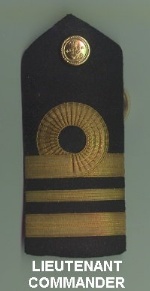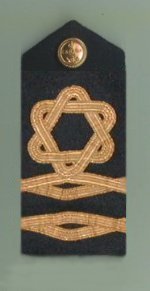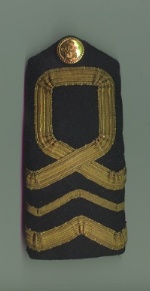Editor’s Note: This series was originally published by Alex Funk on the TimeGhostArmy forums (original URL – https://community.timeghost.tv/t/canada-and-the-battle-of-the-atlantic-part-1-edited/1433).
Sources:
- The Far Distant Ships, Joseph Schull, ISBN 10 0773721606 (An official operational account published in 1950, somewhat sensationalist)
[Schull’s book was published in part because the funding for the official history team had been cut and they did not feel that the RCN’s contribution to the Battle of the Atlantic should have no official recognition. It is very much an artifact of its era, and needs to be read that way. A more balanced (and weighty) history didn’t appear until the publication of No Higher Purpose and A Blue Water Navy in 2002, parts 1 and 2 of the Official Operational History of the RCN in WW2, covering 1939-1943 and 1943-1945, respectively.]- North Atlantic Run: the Royal Canadian Navy and the battle for the convoys, Marc Milner, ISBN 10 0802025447 (Written in an attempt to give a more strategic view of Canada’s contribution than Schull’s work, published 1985)
- Reader’s Digest: The Canadians At War: Volumes 1 & 2 ISBN 10 0888501617 (A compilation of articles ranging from personal stories to overviews of Canadian involvement in a particular campaign. Contains excerpts from a number of more obscure Canadian books written after the war, published 1969)
- All photos used exist in the Public Domain and are from the National Archives of Canada, unless otherwise noted in the caption.
I have inserted occasional comments in [square brackets] and links to other sources that do not appear in the original posts. A few minor edits have also been made for clarity.
Part 3 — The professionals and the amateurs
Marc Milner picks up the story in North Atlantic Run:
While the operational side of the navy chafed at the bit, the shore side got on with the daunting work of expansion. The first task was to provide both personnel and ships for the system of defended ports. Acquisition of the ships was a manageable problem, though the results were far from satisfactory. By the end of 1939 the RCN had managed to beg, borrow, or buy over sixty auxiliary vessels of all shapes and sizes, enough to fill out the minesweeping, anti-submarine, and harbour duties of the defended ports. Many of the ships were unreliable or unsuitable for their assigned roles and therefore badly needed replacement. In fact, few were worthy of long-term service in any but the most menial tasks.
The bulk of the auxiliary vessels taken into the RCN came from other government departments. Manning them posed no problem because most of the ships’ crewmen transferred to naval service, enlisting in the RCN Reserves, Special Service, which respected their peculiar skills (for example, ice clearance). Retired officers of the Royal Navy resident in Canada, of whom about forty were designated for duty with the RCN, also helped fill the gap in manpower.
[Editor’s Note: In general, the regular RCN consisted of professional officers and ratings who planned to continue in the navy after the war. The RCNR were professional seamen in civilian life who would return to their profession at the end of hostilities. RCNR men were highly prized in the navy for their sea-going skills. The RCNR Special Service was (I believe) just a designation for RCNR officers and ratings who had specialized skills, like icebreaking experience, over and above ordinary merchant navy experience. The RCNVR were “hostilities-only” volunteers, with a core of longer-term reservists who had some limited experience before the war. RCNR and RCNVR officers had slightly different rank insignia than RCN officers, as summarized by the Canadian Military Police Virtual Museum:]
Regular Officers in the RCN wore gold stripes on their epaulettes or on the cuffs. The uppermost stripe incorporated the “Executive Curl”. This was a holdover from the early days of the Royal Navy when officers responsible for ship handling and command were separate from other officers such as Surgeons and Engineers. Engineers were granted the curl in 1915 and by 1919 the rest of the branches had been granted it.
Officers of the Royal Canadian Navy Volunteer Reserve (RCNVR) wore similar rank insignia to those of the Regular Navy, however the stripes were of a different pattern, being a zig zag design. This of course lead to the RCNVR being nicknamed the “Wavy Navy”. [The epaulette on the left is of an RCN Lieutenant Commander. The one on the right] is that of an RCNVR Lieutenant Commander. Officers of the Royal Canadian Navy Reserve (RCNR) [in the middle] wore another special pattern of rank stripes. In this case, the curl resembled a Star of David. An RCNR Lieutenant’s rank is illustrated. These patterns of special insignia were discontinued in the mid 1950’s, after which Regular and Reserve Officers wore identical rank insignia.
Marc Milner continues:
With the dispatch of the second — and final — draft of volunteer reservists (RCNVR) to the coast on 10 September, the RCN exhausted its cadre of readily available and “trained” personnel. The first plan for further mobilization was tabled on 17 September and called for an active strength of 5,472 all ranks by the end of March 1940, rising to seven thousand by the same date in 1941. As with other personnel projections in the early months of the war, this first one was based on the needs of home defence and the availability of ships. The RCN proved rather successful at cobbling together its auxiliary fleet, and the projections for March 1940 were surpassed much earlier. Yet, despite this early trend towards rapid growth, expansion in 1939 and 1940 was choked by shortages of every conceivable type. Sailors went without proper naval uniforms because no one foresaw, at the end of 1939, that the navy’s strength would rise to ten thousand by September 1940. Further, until 1943 the “key to expansion” as the Naval Staff liked to call it, was the shortage of training staff, a shortfall which the RN unwilling to help alleviate.
What the navy badly wanted were skilled men: men whom they were losing in large numbers to the other two services, particularly the air force. For the RCN did not even have the necessary housing to take in the throngs of eager and qualified volunteers waiting to join up. The problem occasioned debate at the first Naval Staff meeting in January of 1940. The urgent need for temporary accommodation was stressed, “in order that recruiting programme could be proceeded with before the new rapidly expanding RCAF seized all the best — and particularly most skilled, men”. The RCN also found that it had to lower the minimum age of entry from twenty-one to nineteen in order to counter the ravages of the air force on available manpower.
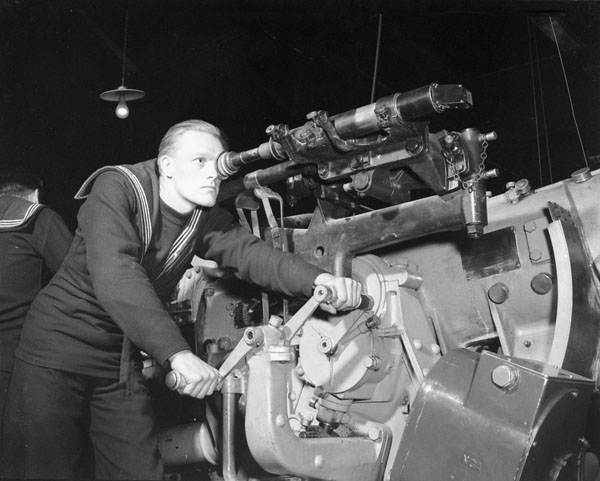
RCN rating operating the training mechanism of a 4.7-inch gun, Royal Canadian Navy Gunnery School, Halifax, Nova Scotia, 1940.
Canada. Dept. of National Defence / Library and Archives Canada / PA-104416
Despite the struggle over manpower and the navy’s reluctance to expand too quickly, the growth of the navy soon acquired a snowball effect which it seemed incapable — or perhaps undesirous — of firmly controlling. At the end of 1939 the Naval Staff anticipated a completed wartime strength (after three years) of 1,500 officers and 15,000 ratings. This figure was reached and passed in half the time. But the really hectic pace of expansion did not begin until after the fall of France and Norway. Up to that point the RCN had planned a very deliberate and selective growth, as Vice-Admiral Nelles, Chief of the Naval Staff (CNS), explained to the naval minister in January 1940.
Macdonald had broached the subject of giving preferences in RCNVR commissions to members of prominent yacht clubs. In an illuminating statement Nelles made it clear to the minister what role “Sunday Sailors” would play in Canada’s war at sea. “The RCN is in need of many men before this war is over,” Nelles wrote, “but the [types] of ships suitable to Canadian service conditions [Tribal-class destroyers or small inshore-patrol ships] are more suited to the employment of professional seamen than of amateur small boat yachtsmen.” The CNS’s comment was no idle remark on an easily dismissed subject. Earlier in the same day Nelles had received a memorandum from his director of Naval Personnel, who, no doubt responding to the minister’s inquiry, refused to countenance the mythical value of “Sunday Sailors”. Yachting, the DNP reported to his chief, had about as much to do with modern naval skills as flying a kite had to do with modern air operations. None the less, in order to find employment for these eager warriors, Nelles informed Macdonald that he was prepared to release fifty young yachtsmen to the Royal Navy “to serve in the more interesting appointments overseas and represent Canada at the scene of active operations”. His words suggest clearly what Nelles and the navy felt of keeping the fleet in home waters. In terms of manpower this option offered an alternative to simply turning recruits away, and they would not be lost to either Canada or the war effort. The loan scheme was approved, and it was initially decided to send all RCNVR recruits in excess of 4,500 to serve in the RN. Though this plan was later drastically altered, the incident illustrates the selective nature of the navy’s expansion before the fall of Western Europe, the desire to participate in the “active” theatre, and the problems inherent in trying to expand from too small a base.
Back at sea, the phony war was one of drudgery for the RCN, aside from its participation in the capture of the SS Hannover in the Caribbean. Shuttling convoys back and forth between the defended ports of Canada to meeting points offshore, the odd troop transport across the ocean, coastal convoys between ports. All essential, but not the work the navy had been hoping for.
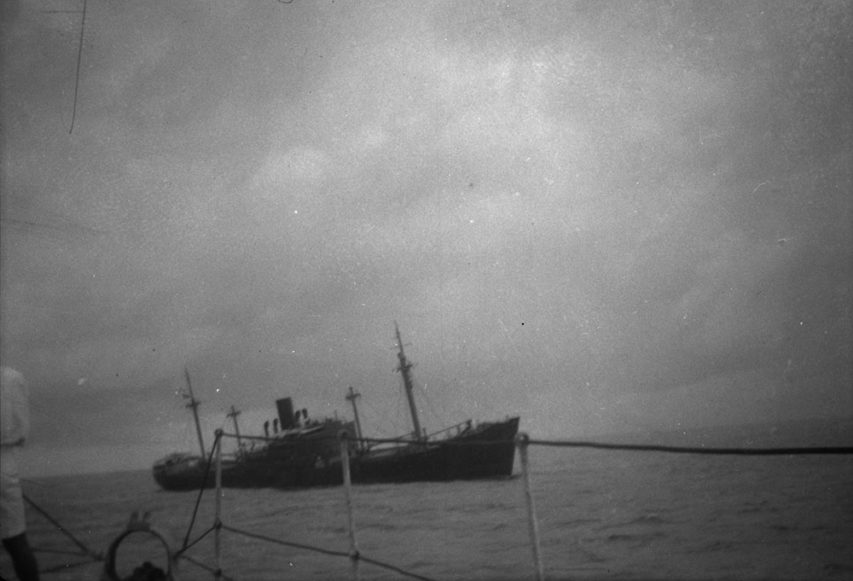
HMS Dunedin and HMCS Assiniboine intercepted the blockade runner SS Hannover in early March, 1940. Later, this vessel was converted into an escort aircraft carrier, HMS Audacity.
Canada. Dept. of National Defence / Library and Archives Canada / PA-104055
They got their wish soon enough. The phony war ended quite spectacularly in the spring of 1940, and a request was sent from London to Ottawa for “all available destroyers”, even as the BEF fought to disengage itself and form a secure position from which to evacuate. The cabinet eventually more or less agreed, even thought it meant virtually stripping Canada herself of naval defenses.
The fall of France left some senior Canadian politicians, Mackenzie King among them, more concerned than ever for the vulnerability of Canada’s vast coastline. However, both the Canadian Chiefs of Staff and the British, including Prime Minister Churchill (by whose opinion Mackenzie King set great store), were able to convince the Canadian prime minister that Canada’s first line of defence was the English Channel.
The navy mustered four destroyers for travel to Europe. Joseph Schull writes of their departure and first subsequent action in Far Distant Ships:
In Halifax, on the afternoon of the 24th [of May], the Canadian destroyers Restigouche, Skeena and St. Laurent were preparing to go to sea on an unscheduled voyage. Leaves had been cancelled, libertymen summoned back to their ships and all prospect of an Empire Day celebration ruined with truly naval efficiency. The mood on board St. Laurent was particularly black, as she had been recalled from one convoy and was under orders for sea again before a man could step ashore. The mess deck “buzz”, discredited and discouraged by nine months of unvarying monotony, gave promise only of another local convoy run. If there was any bright feature of the day it must have been the mild spring weather which had enabled the men to relieve their crowded mess decks by sending heavy clothes and miscellaneous cold weather gear ashore.
With early evening came the familiar “cable party fall in” and the equally familiar call for sea dutymen to muster. The destroyers nosed their way out of the harbour while men on watch speculated without much curiosity over the fact that there appeared to be no convoy in evidence.
The explanation came several hours later. There was to be no convoy this time and no turning back to Halifax after twenty-four hours. The lambie coats left in Halifax would not be seen by their owners for a considerable time. An urgent cable from the United Kingdom had arrived at Ottawa the day before. Invasion was an imminent possibility and every ship which Canada could send was required in British waters.
Restigouche, Skeena and St. Laurent were on their way. Assiniboine and Ottawa were in refit in Halifax and would not be operational until about the middle of June. Saguenay could not make the crossing as she was also badly in need of refit. Fraser, en route to Bermuda, had been assigned to the Jamaica Force of the Royal Navy in March to conduct Caribbean patrols. En route to Bermuda, had been ordered to continue her voyage, refuel at Bermuda and proceed directly to the United Kingdom.
The first wartime passage of the three destroyers was uneventful but scarcely monotonous. By day and by night the men went through intensive air raid and anti-submarine exercises. The commanding officer of Restigouche saw the efficiency of his ship increase rapidly during the voyage and suggested that the improvement “was no doubt accelerated by the realization of the ship’s company that we were rapidly approaching an extremely active war zone.”
It may well have been so. While still a day’s steaming from the United Kingdom the ships were ordered to a position of Ushant on an abortive submarine hunt; and when they finally secured at Plymouth on June 1 the evacuation of Dunkirk was at its height. The First Lord of the Admiralty found time for cordial words to the newcomers:
The presence of units of the Royal Canadian Navy in our midst inspires us all to a still harder effort. Confident both of your skill and of your valour we wish you good luck in the fierce and exacting toil which lies before you.

